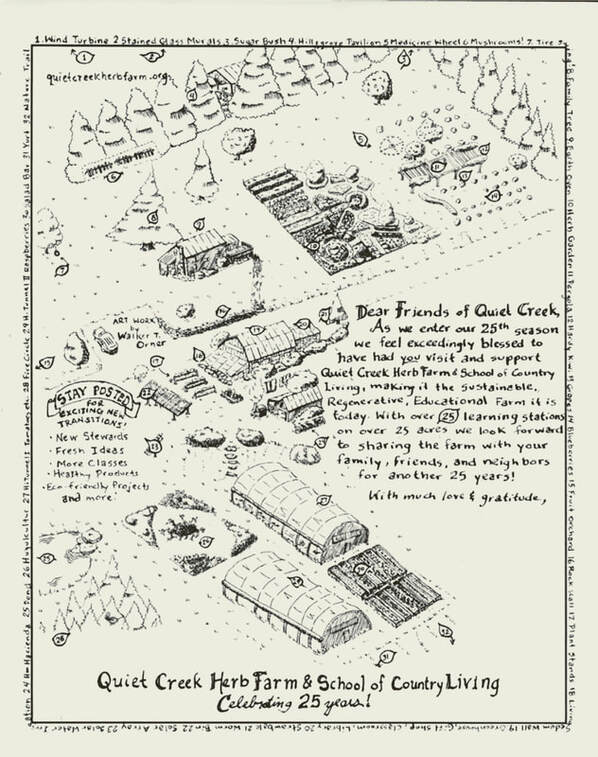|
This is your new blog post. Click here and start typing, or drag in elements from the top bar.
0 Comments
Oysters! - If we were able to ask a mushroom, “What is the meaning of life?” It would surely reply, “To be or to be --decomposing.” The labor of the mushroom is enjoyed by all at Quiet Creek. It breaks down rotting biomass to produce soil and scrumptious ingredients for omelets, pizza, and stir-fry.
Throughout the year Quiet Creek students will learn to collect wild fungi: morel, sheep’s head and chicken of the woods. This past weekend, three year-olds to adults cultivated oyster mushrooms on freshly cut quaking aspen logs. Rusty, who only appreciates wood for its burning ability, used to poo-poo the quaking aspen until he discovered it is the perfect substrate or growing medium for oyster mushrooms, one of his favorite foods. When he sautés oysters in butter and garlic, these delicacies are gobbled up by him and our boys. Pleurotus ostreatus, commonly called the oyster, grows wild on most trees and can easily cultivated by the novice. The wild oysters can grow close to the ground, to forty feet high. This height makes harvest a bit challenging, unless you have a monkey like Ashton to climb the tree for you. A simpler technique, for anyone anxious about scaling tall objects, is to cut logs greater than eight inch diameter into twelve inch sections. These chunks are stacked totem pole style with oyster spawn placed in between each layer. Spawn is sawdust seeded with the mushroom spore. It can be bought at mushroom supply outlets. Once the wood is stacked and dusted with spawn, a wet newspaper caps it and the whole stack is enveloped in a garbage bag for six weeks. The oyster totem pole is then unveiled revealing its beautiful budding fruit. In that short period of time, the mycelium (mushroom roots) completely colonizes the stacked wood. When ready for a delicious meal, slice the mushroom off and begin creating a culinary treat. Chopping large trees down, placing wedges in these freshly fallen trees and inoculating spawn into the cuts works well, if you have a forest to cultivate. Drilling quarter inch holes into logs, hammering in the spawn plugs, and painting on melted beeswax works well for smaller limbs. If trees are difficult to come by, try growing oysters on other substrates. A cardboard box filled with straw, a bale of straw, or a bucket of coffee grounds will host the oyster. No matter what the growing medium, the mushroom works hard to fulfill its purpose in life. We enjoy the nutritional treat it provides. |
Rusty and Claire Orner, with their two sons, Walker and Ashton, are stewards of the non-profit educational organization, Quiet Creek Herb Farm & School of Country Living in Brookville, Pennsylvania. They can be contacted at Archives
March 2021
Categories
All
|
 RSS Feed
RSS Feed
